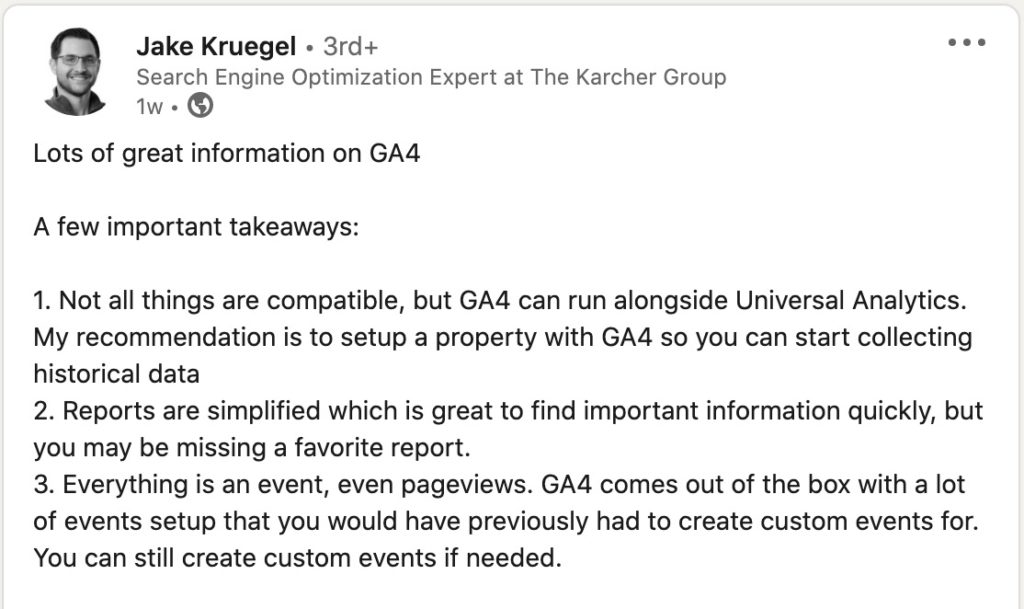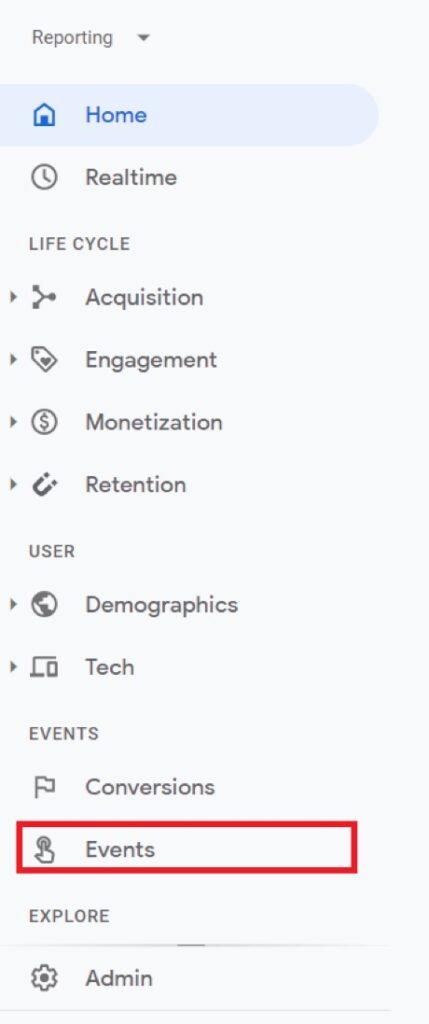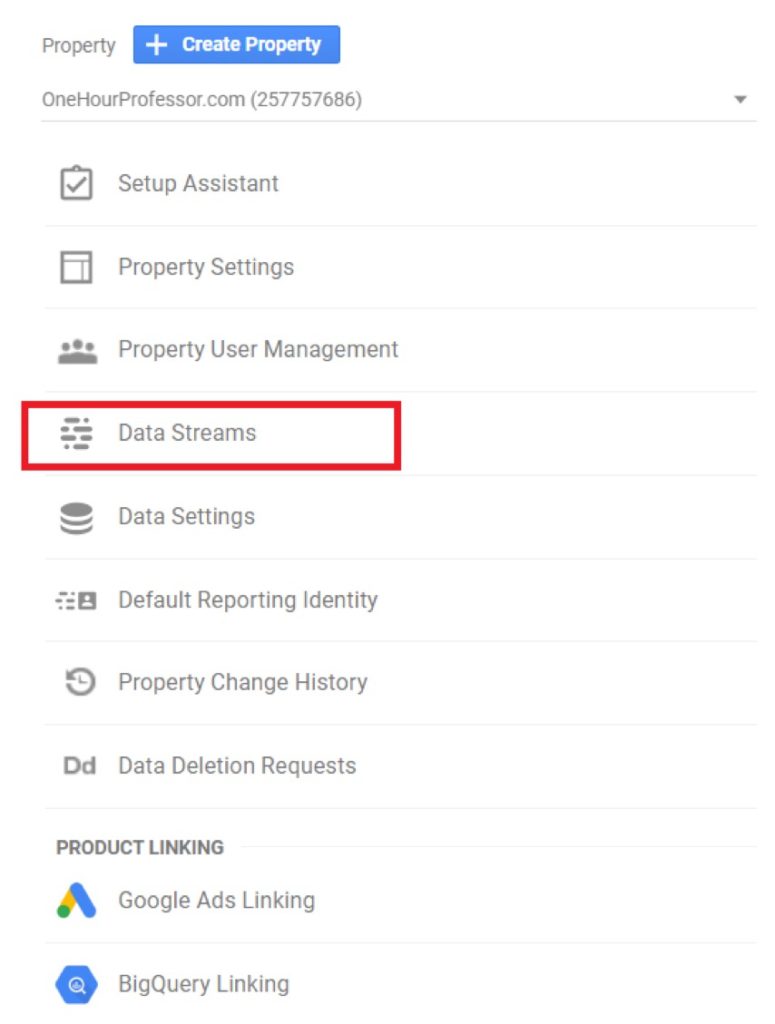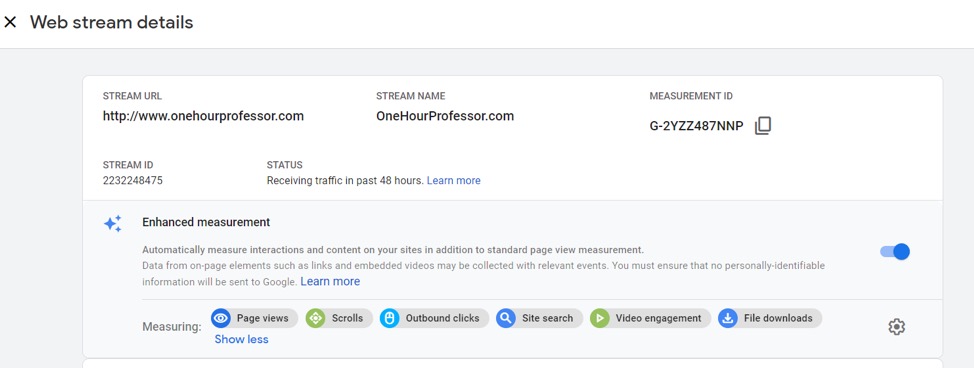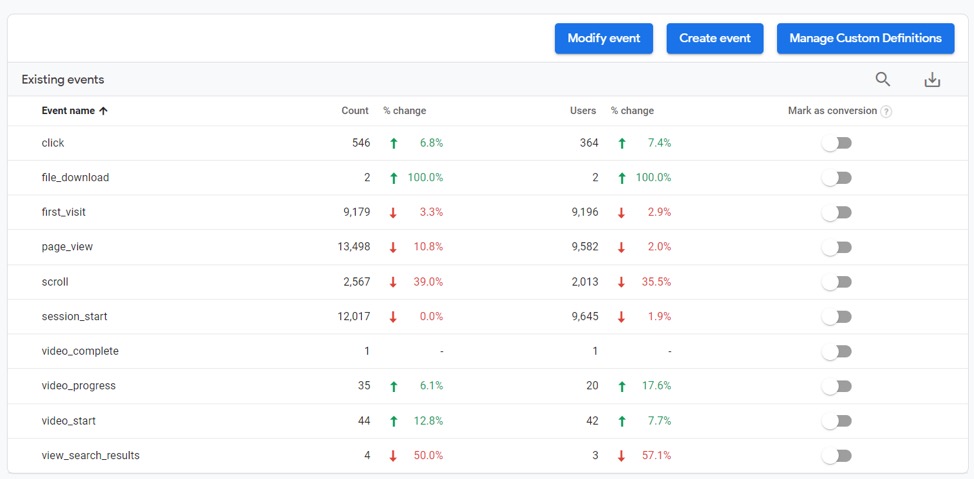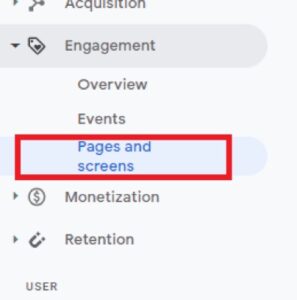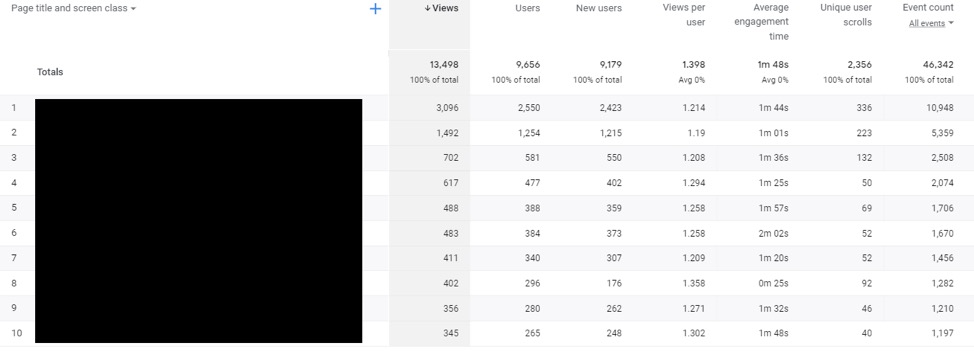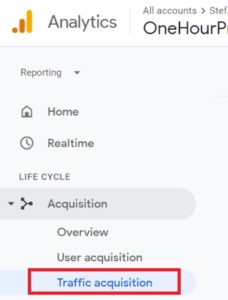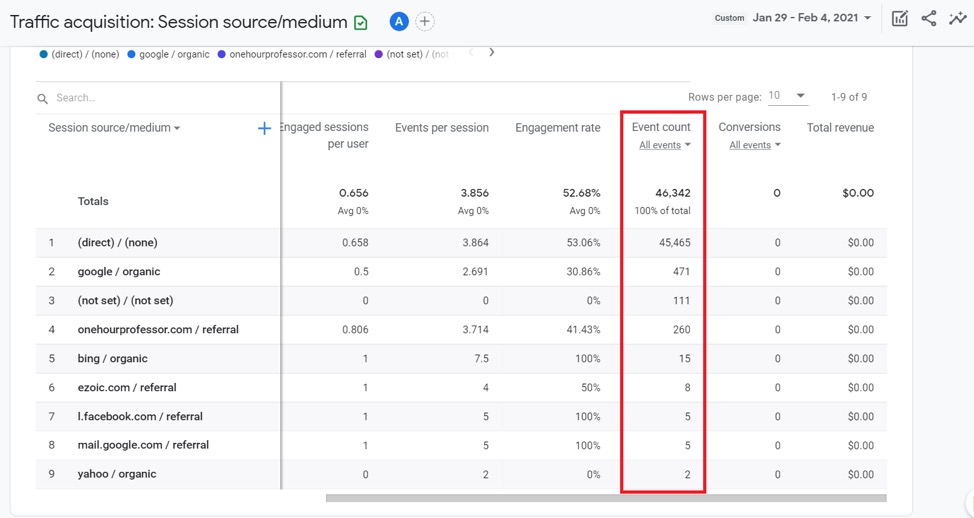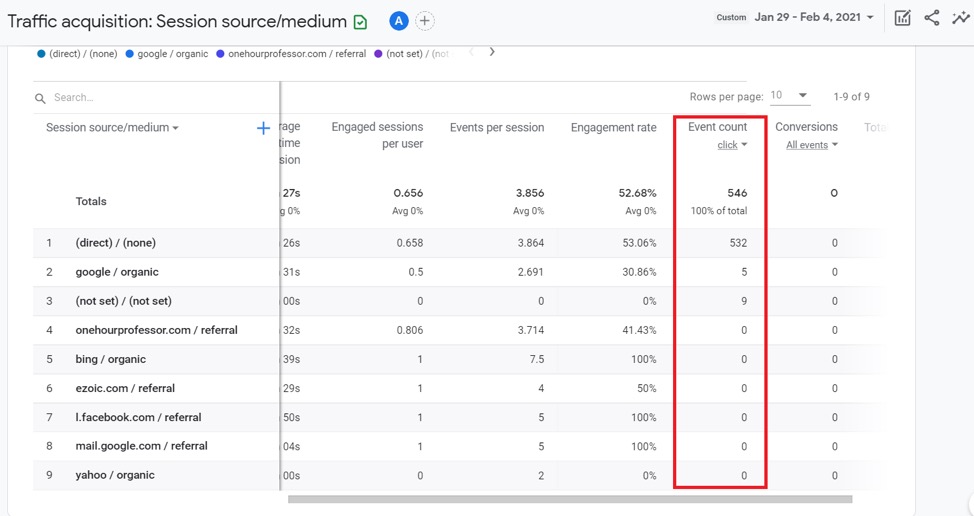5 Ways to Use GA4 to Generate More Revenue For Your Business
In October 2020, Google introduced Google Analytics 4 (GA4), its largest update to Google Analytics since the popular tool was unveiled in 2005.
Since then, there’s been tons of excitement with regards to the direction Google is taking the product, as well as a lot of questions regarding the fundamental changes to how GA4 collects and reports on data.
One thing of particular importance to marketers is how this new and improved version of Google Analytics can help you in your business, and in this article, we take a look at 5 ways you can use GA4 to generate more revenue for your business.
Key Upgrades in GA4
Listed below are some of the key upgrades of the tool:
- GA4 is focused on providing marketers with a more comprehensive understanding of their customer journey across different devices.
- The tool is built with advanced machine learning as its main form of data measurement. It uses modeling that allows it to extrapolate from existing data in order to make assumptions regarding user behavior and site traffic.
- The new AI-powered “Insights” feature automatically highlights helpful information to make it easier for marketers.
- Google designed GA4 to be future-proof to ensure that it will work even when there are no cookies or any identifying data.
- Instead of the segments and views used by the old Universal Analytics properties (GA3), the new Google Analytics features “data streams”.
- Whereas the traditional Universal Analytics had three levels (Property, Account, and View), GA4 only has two levels: Account and Property.
- The final highlight of the new Google Analytics 4 is that the tool enables tracking, editing, and fine-tuning events from within the user interface, which means interactions such as clicks, page-scroll, and much more. This is a vast improvement over the “event tracking” in previous versions which could only be done through the use of modified analytics code.
Marketers are already raving about these key upgrades:
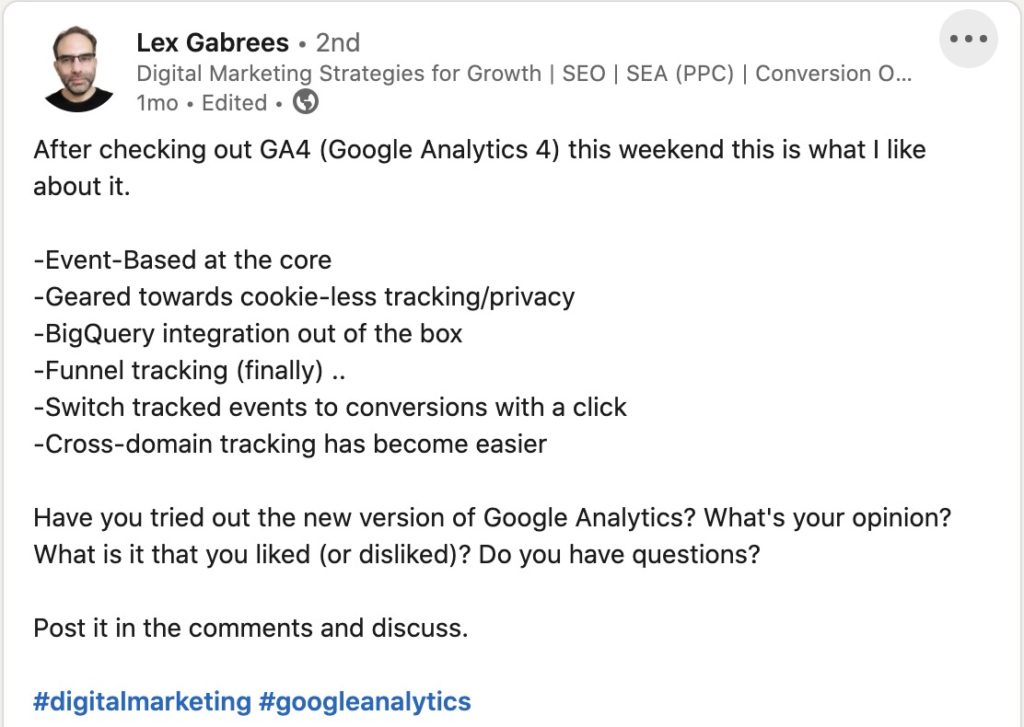
Using GA4 Features to Boost Your Revenue
And now we come to the interesting part, which is how you can use the new capabilities of Google Analytics 4 to increase your revenue.
After all, although businesses can set marketing goals for any number of reasons, ultimately, it all comes down to being able to increase your bottom line.
This is how GA4 can help you do just that:
1. Automatically Collected Events
One of the most frustrating things about events in the previous version of Google Analytics was how you would have to personally set up events of any type in order to track them. This meant creating a tracking code/identifier, defining what this tag was, putting the tag on your website, and keeping track of all of the tags created.
Needless to say, this was laborious and not user friendly at all. While GA4 doesn’t solve all of the problems related to tags on your website, they’ve made the entire process of implementing tags much more simple.
With GA4, they’ve already created a list of the most common pre-defined tags on the platform.
These include the user:
- Language
- Page Location
- Page Referrer
- Page Title
- Screen Resolution
In GA4, everything is an “event”:
How to Use on Your Own Website
- To see the default tags for your own website, go to your navigation and click on the Events tab.
- Once there, you’ll see the pre-defined tags already implemented for you. There is no action necessary at this point unless you’d like to see more tags which we will examine in step 2.
2. Enhanced Tracking for Specific Events
Thanks to GA4’s “enhanced measurement” feature, automatic tracking of certain types of events, such as site search tracking, exit tracking, media tracking, and scroll tracking can be done without any additional coding or tagging.
Having tracking on these events can be extremely beneficial in helping you improve your digital strategy.
Now you can use events tracking for site search to tailor the optimal path for your website visitors. Optimizing the path for your visitors will ultimately lead to higher conversions which generate more revenue.
For instance, if you had a website that offered a number of online courses teaching Photoshop, you could track the events that the users take and, based on those events, detect that they’re likely to want course private label rights (PLR) for what you offer to resell them.
The entire list of automatically-collected events can be found here, but this includes things like clicks on a link that leads to an external domain, when someone starts their first visit, when a user clicks a link to download a file, and they’ve even built in automatic tracking events for apps like if an app crashes or someone renews their subscription.
How to Use on Your Own Website
- To use this on your own website, you’ll need to go to the gear icon all the way on the bottom left of your screen while in analytics.
- From there, you’ll need to click on “Data Streams” under the property.
- Once there, you’ll see “Enhanced measurement” as an option. Toggle it to the “on” position. If you’d like to customize these measurements and exclude some, you can click on the gear on the bottom right, but I advise you to leave all of them enabled.
- At this point, GA4 will need to collect data. If you review the dashboard you’ll see nothing populated and it’s advised that you wait around 48 hours to see the new data.
- At this point, GA4 will need to collect data. If you review the dashboard you’ll see nothing populated and it’s advised that you wait around 48 hours to see the new data.
- Upon clicking into the event, you’ll be able to see a much more detailed account of how and where each event occurred from. Below is a screenshot showing click activity to external links of one of my own websites.
- If you want to take it a step deeper, I can click on the “Pages and Screens” tab which will show the specific areas of your site that drove the most clicks.
What KPIs Will This Impact?
Depending on the goals of your website, this will have a significant impact so long as you utilize the data correctly and draw actionable insights from it.
For example, the screenshot above shows how many clicks I’ve had on external links on my site by page. As you can see, my top page had over 10,000 clicks on external links in a 7-day period.
This is fine with me because I have many different affiliate links on that page, but if you want to try to keep people on your site and that was your goal, this would be an indicator that you need to adjust that page to either include fewer links to external sources or include more internal links.
2. Lose the Cookies, Not the Data
GA4 is planning for the phasing out of third-party cookies and the company predicts that sparse data will become the norm.
In a future without cookies, GA4 intends to fill in the data gaps using machine learning in order to maintain reporting accuracy and provide better insights.
It’s crucial for businesses to have an effective way to maintain some of this data, which is why you should switch to the new GA4 property so you can get access to a more comprehensive view of your customer lifecycle across different channels.
In addition to all that, GA4 will also make that information work for you through the use of predictive marketing features in order to give you additional information and effective means of acting on those insights.
How to Use on Your Own Website
From a user perspective, there isn’t any action needed for this. At its core, GA4 is built in a way to utilize AI to find trends and showcase that data for you.
Third-party cookies have not been removed yet and there is talk that this will really take shape in 2023, but connecting your Google Analytics to GA4 now will allow the platform to begin collecting data to provide better insights in the future.
What KPIs Will This Impact?
Considering that we’ll soon be in a world without third-party cookies, it’s fair to say that this is going to greatly impact all online businesses on many different levels. Depending on your monetization channels, it could impact revenue, impressions, clicks, pageviews, and a plethora of other metrics.
Moving forward once third-party cookies are gone it seems as though analytics won’t be absolute, but more of an estimation.
3. Customer Lifecycle-Framed Reporting
Customer lifecycle framed reporting is among the most noticeable differences between the new Google Analytics 4 and the previous Universal Analytics version.
This feature has to do with how reports are organized. The goal of GA4 is to offer marketers a complete view of how their customers engage with their business across various devices and channels.
Furthermore, GA4 allows you to allocate a user with an ID. You can also enable Google signals so you can duplicate users across different devices allowing for better ad targeting and reporting, which, in turn, will help you find qualified leads and generate more revenue for your business.
This is an especially exciting feature for companies that host high-converting webinars and other high-converting tactics to turn browsers into customers. This allows you to not only see where your traffic is coming from but analyze the engagement metrics with that traffic source and understand what actions those users took.
How to Use on Your Own Website
There are various ways to utilize these reports, but one of the most common ways will be to understand user engagement in relation to the traffic source that the visitor came from.
Here’s how you can do that.
- Click under the “Acquisition” area to “User” or “Traffic” Acquisition, whatever you prefer. For the sake of this post, we’ll use the traffic acquisition as I feel it’s the most common use case.
- Next, you’ll see this screen. Scroll to the right using the bottom slider until you see “Event Count”.
- In event count, click on “All events” and then see what events triggered based on the traffic source. For the sake of this post, we’ll focus on “click”.
- Next, you’ll be able to see the number of clicks to external sites that resulted from which traffic source. Keep in mind, with the usage of UTM parameters, you can very strictly define sources here and get as granular as you’d like. In addition, you can also add conversions here and while that isn’t included in the screenshot, it would be essential for ecommerce brands to track ROI spend.
What KPIs Will This Impact?
When used properly, this data will undoubtedly be able to lower the cost of user acquisition and presumably raise the ROI of advertising and content investment as a whole. The reason for this is that since these reports are tied together more closely, it’s much easier for the end user to understand what traffic sources are producing results and what those events are.
4. Cost-Effective Data Warehousing
The use of BigQuery allows for more cost-efficient data warehousing for ALL GA4 users. By allowing you to warehouse your GA data in a cost-effective way, Big Query gives you analytical flexibility and provides event-level historical data logs.
This is the evolution that many marketers have been waiting for as, previously, the BigQuery function could only be accessed by GA360 subscribers, each of whom had to pay a hefty price of $150,000 a year.
This meant small and midsize businesses didn’t have the ability to effectively store the data in a SQL style environment. But now, with just a couple of clicks, all organizations with Google Analytics 4 properties can now access cheap data warehousing.
The reality is, SEO data collection can be expensive, but GA4 will help make these data points a reality for many small and medium-sized businesses that aren’t ready for API integration just yet.
How to Use on Your Own Website
There is no work needed on your end to utilize the big data capabilities of Google. The GA4 platform is built in a way that gathers more of this data and provides these additional insights free of charge for users.
What KPIs Will This Impact?
Allowing the SMB segment to utilize larger data sets is setting the table for many smaller companies to have the abilities that large companies have had for years. With the right staff, companies will have the ability to increase revenue, engagement across their sites, conversions, and more efficient spending of ad dollars.
5. Predictions Powered by AI
GA4 is using AI to make predictions based on data trends. With the new platform, you get powerful insights and predictions powered by artificial intelligence.
Although this concept has been used in analytics for some time now, GA4’s approach is different as it can highlight data trends that can impact the potential revenue of a business, such as the increase in demand for a particular product or service.
Another example of how this can be used by businesses to make smart decisions is to make use of the AI-powered insights and predictions feature to predict outcomes like churn rates or the potential revenue your business might earn from a specific segment of customers.
All these are examples of how this technology can help you anticipate your customers’ actions in the future, enabling you to place more of your focus on higher-value audiences, and ultimately boost your bottom line.
How to Use on Your Own Website
While it’s still yet to be seen how GA4 will utilize AI in their platform, it’s safe to assume that like many of the other features above there will be a minimal amount of work needed from the end user to turn AI features on.
What KPIs Will This Impact?
AI brings a whole new aspect of analytics that has never been explored before for many Google Analytics users. Depending on how well this platform and the AI metrics are built out, it’s likely that this could have a very positive impact on the revenue of many companies.
If GA4 and beyond is built in a way that, if fed the data, can predict the conversion % of users from a single page to the purchase of a product or service that a company is offering, the impact on KPI’s will only be limited to what the company decides is a KPI for them.
Summary
The bottom line is that Google Analytics 4 is a paradigm shift for the popular web analytics platform. It comes with a lot of new changes, as well as a lot of technical details marketers need to understand. With GA4, data collection capabilities that were previously only offered to large companies will be available to everyone. Just as long as they follow the data to get them there.
The five GA4 features outlined in this article will allow you to leverage this powerful tool to help you generate more revenue for your business. And if you’re A/B testing, we are thrilled to announce that our newly launched official integration with GA4 is designed to empower you with these capabilities.

Written By
Ron Stefanski

Edited By
Carmen Apostu

